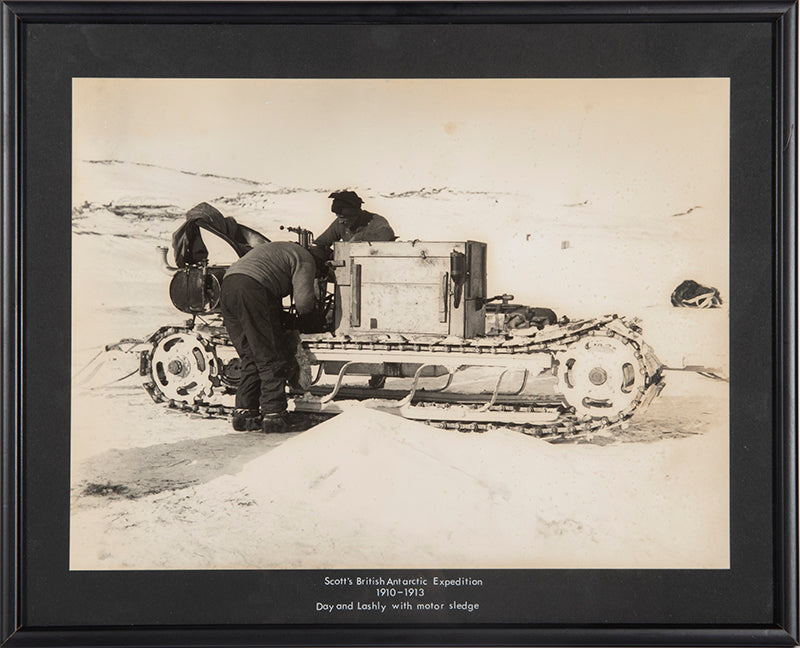
Day and Lashly with motor sledge.
Circa 1935.
The Terra Nova expedition was supposed to be the high-water mark of the Golden Age of Antarctic exploration; led by Captain Robert Falcon Scott, the expedition was to have been the first to reach the South Pole, marking the event with the planting of the Union Jack flag. However the more professionally equipped Norwegian expedition led by Roald Amundsen got there first. Nevertheless Scott's expedition will always be the one best remembered on account of the tremendous courage and bravery shown by Scott and his companions, Wilson, Bowers, Oates, and Evans on their return from the Pole in appalling conditions - perhaps best exemplified by Lawrence 'Titus' Oates who walked from the tent into a blizzard whilst suffering from frostbite and gangrene, knowing that he was not going to survive the journey but hoping that his self-sacrifice might help the others survive.
Scott originally chose a light-weight French-designed motor sledge which he tested in the Alps, but this was abandoned for a sledge designed by Major B.T. Hamilton, built in Britain and tested in Norway. The weight of these sledges was a problem, and the first to be offloaded from the Terra Nova fell through the ice and sank to the ocean floor. The other two started well, but failed to master the terrain or the climate and were soon abandoned, Scott writing 'So the dream of great help from the machines is at an end!'
The photographs were originally published by the Fine Art Society in 1914 in larger format using a different process. It is difficult to date images such as ours, printed at a later date from the original negatives, however based on external evidence from previous examples we date the present image to circa 1935.
Silver gelatin print, mounted, framed and glazed, captioned below image on mount. Image size: 214 x 287 mm; framed: 281 x 349 mm.
Provenance
Delivery
We offer secure and express delivery on all local and international orders of rare books, maps and prints placed through this website.










